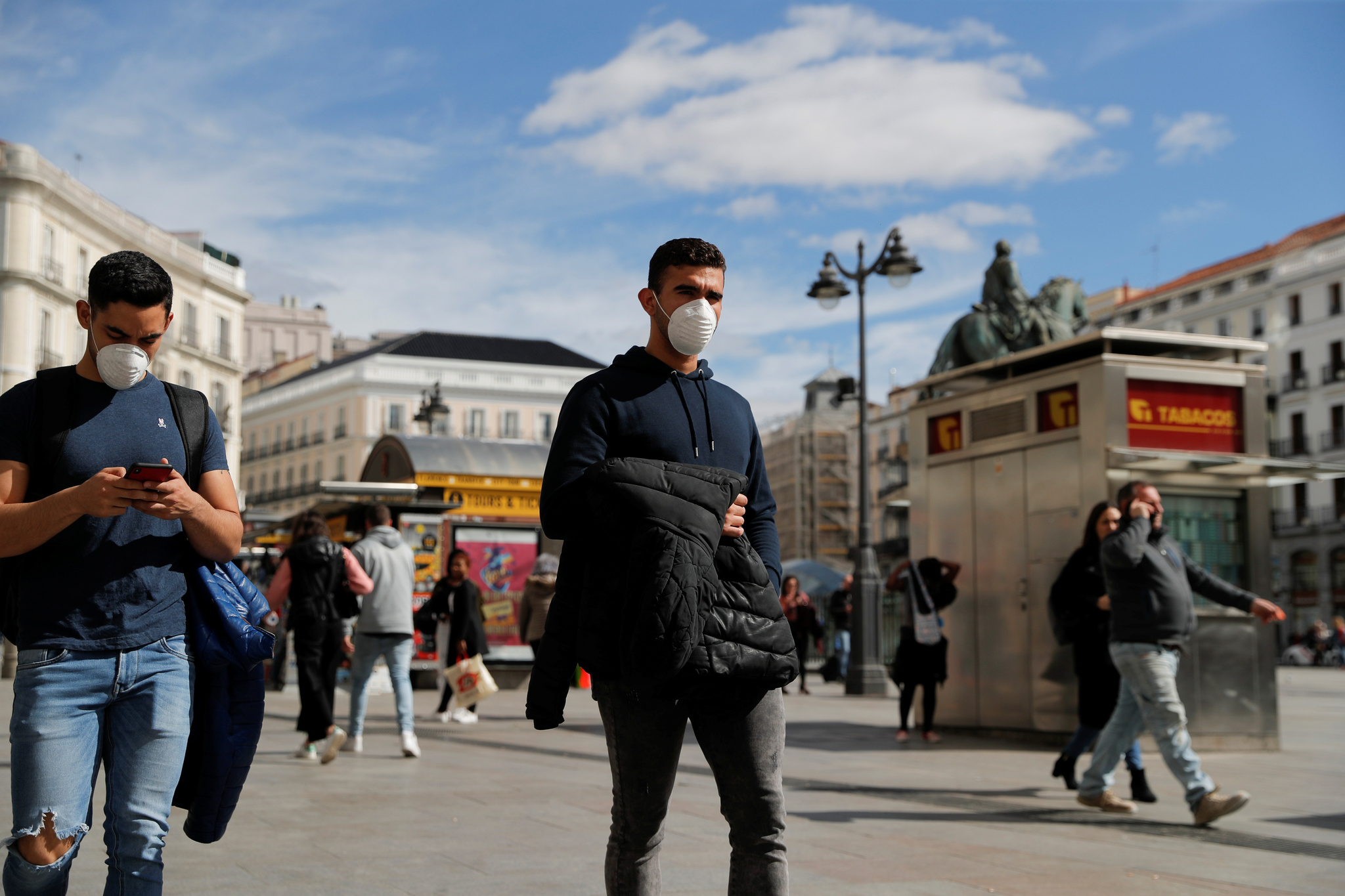- P&R. Symptoms, treatment and how to avoid contagion
- Graphics: Map of the coronavirus: thus it has expanded throughout Spain and the world
What should I do if I suspect I have contracted the coronavirus? At this time, health information is expanding at the same rate as COVID-19 and possibly any citizen believes he knows the answer: call 112 if symptoms such as cough, fever or respiratory failure occur . That is the established protocol, but not always following it means knowing with certainty whether or not this disease is suffered because the analyzes are only performed in certain cases.
Earlier this week, CT, 32, began to feel bad, with a cough and general indisposition, but thought he was a simple "constipated" and did not give it much importance until he received a whatsapp from his brother warning him that there was had direct contact with a coronavirus infected. His classmate from the Humanes FP Campus in Madrid had tested positive. And the contact was close because, as he acknowledged, "they even passed a cigarette."
It was then that CT began to consider whether that cold already aggravated with vomiting was actually symptoms of COVID-19. In compliance with the recommendations of the health authorities, he called 112 and after 40 minutes of waiting, the operator referred him to a doctor . The young man was very surprised that the toilet warned him that they could only be tested if his brother tested positive. But this is what all the protocols establish both at national and European level, experts say.
" Epidemiological and clinical criteria have been established to define in which cases the test is currently required," explains Antoni Trilla, head of the Epidemiology and Public Health service of the Hospital Clínic de Barcelona.
From the epidemiological point of view, it is necessary to analyze if the patient has recently traveled (the incubation period of the virus is a maximum of 14 days) to areas of risk or with sustained transmission of the virus, such as China, South Korea, Iran or northern Italy. In addition, those people who had contact with a person with a proven coronavirus infection would also meet the epidemiological criteria.
However, these criteria are not the only ones that open the door to the realization of the test. Today, it is also an indispensable requirement that the person develop symptoms compatible with the disease. "Both epidemiological and clinical criteria must be met," says Trilla.
The only case where the test is being indicated despite not meeting both criteria, says Ángel Asensio, head of the Preventive Medicine service of the Puerta de Hierro Hospital in Majadahonda (Madrid) is in patients suffering from viral pneumonia whose origin could not be defined .
Therefore, both specialists stress, today, what the protocol indicates is that the coronavirus test should not be performed in people with symptoms that have not had direct contact with infected or risk areas; nor in those who have had a relationship with those affected but have not developed symptoms.
In any case, it is always the Epidemiological Surveillance Service who, through 112, decides when and in what cases it is reasonable to perform the tests, says Trilla.
The brother of CT had felt a certain discomfort just the day before to learn that there was a case of contagion so close but had recovered in just a few hours. However, given the circumstances and seeing the concern in his environment, he decided, after an unsuccessful wait in 112, to approach the health center to request such analyzes. "They told him that until he had symptoms, they would not do so and recommended that he remain in isolation with his girlfriend for 14 days," explains CT.
Today, the evidence indicates that the transmission of the virus occurs basically in patients with symptoms of the disease, so, if there are no visible signs of infection , it is considered that there is no risk of infection, experts clarify .
"My classmates get away from me"
Both in the case of close and casual contacts, the Ministry of Health recommends active surveillance for the former and passive for the latter , which means that those affected may be aware of any symptoms.
On Thursday, CT decided not to go to work. The day before his teammates "put on a mask" and "walked away" from him for fear of being infected . Throughout the day he perceived "weird environment" around him and some and others advised him for his good and for everyone, "to go home." He has no chance of working from home because he is a carpentry editor so he is considering taking a leave.
While waiting to see how the disease evolves, it uses paracetamol, disinfectant and covers to try to reduce the risks of transmission .
What is the coronavirus test?
To perform a test that verifies the presence of the SARS-CoV-2 coronavirus, the most common is to take samples of the mucosa of the nasopharynx or oropharynx through a pharyngeal smear with a swab. Then, a test called PCR is carried out, which identifies the viral RNA, explains Ángel Asensio, head of the Preventive Medicine service at the Puerta de Hierro Hospital in Majadahonda (Madrid). This test takes about three hours to produce results, although "it is expected that commercial kits will be available shortly to automate and do so in much less time."
According to the criteria of The Trust Project
Know more- Science and Health
- Coronavirus
- Covid 19
Health: The US coronavirus patient was not tested for the disease for days
Covid-19 First case of Israeli coronavirus arrived from Italy
Interview Teresa Romero, the Ebola survivor, to those infected with the coronavirus: "Let them be strong coconut, which is the most important thing"

